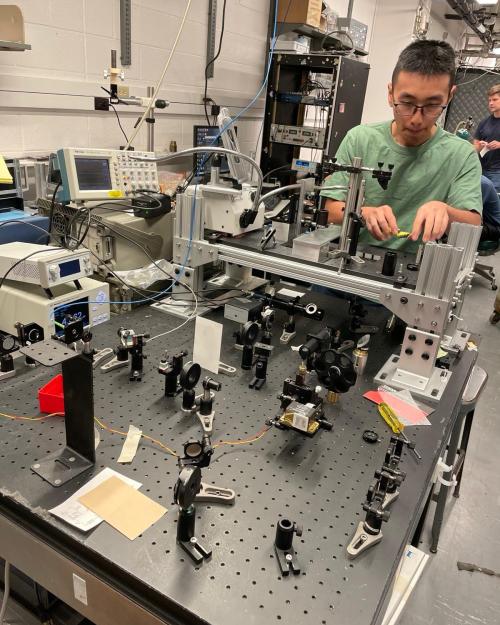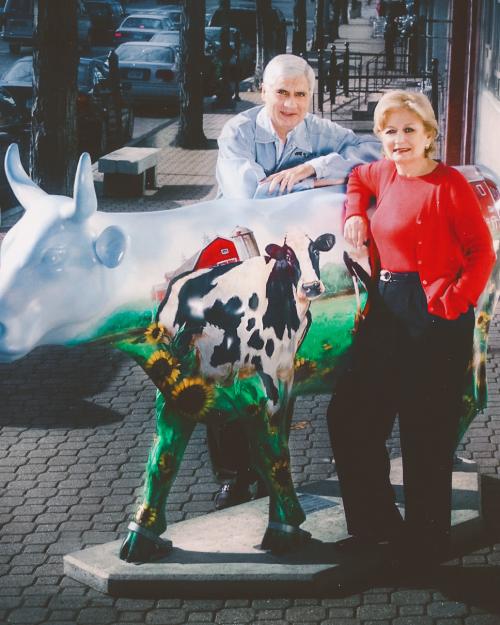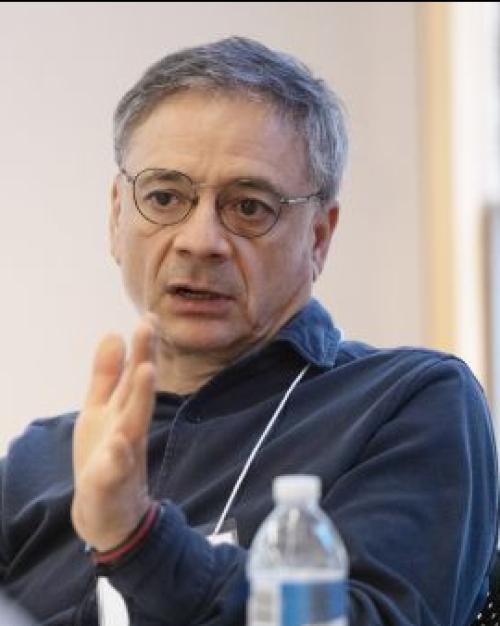Methane-based life forms. Atmospheric colors. Planets forming out of scattered debris.
At the Carl Sagan Institute’s inaugural coffee hour, conversation ranged across the universe – and the university. As CSI director Lisa Kaltenegger, associate professor of astronomy in the College of Arts and Sciences, noted the institute includes faculty from 11 departments and five colleges and schools at Cornell. It was founded in 2015 to explore other worlds: how they form, evolve and if they could harbor life.
“We’re all interested in understanding planets inside and outside of our own solar system and discovering what’s out there in the universe,” said Kaltenegger. “The synergy among the scientists allows us to think outside the box and is really exciting.”
The monthly coffee hours, funded by a grant from the Kavli Foundation, are designed to give CSI members an opportunity to learn about one another’s research and spark ideas and collaborations among the scientists.
“The coffee hour will enable creative, interdisciplinary discussions among Carl Sagan Institute researchers that will in turn enable frontier research,” said Chris Martin, science program officer for the Kavli Foundation.
At the first coffee hour in April, held at the CSI conference room in the Space Sciences Building, participants introduced themselves with a combination of serious science and humor.
“I’m interested in climate models of Earthlike planets, especially this one,” said Toby Ault, assistant professor of earth and atmospheric sciences in the College of Agriculture and Life Sciences. “Paleoclimate modeling has some nice synergy with exoplanets.”
Graduate student James Stevenson, working with professor Paulette Clancy, another CSI researcher in the field of chemical engineering, talked about the speculative work he’d done on possible methane-based life forms on Titan with Jonathan Lunine, the David C. Duncan Professor in the Physical Sciences in the College of Arts and Sciences’ Department of Astronomy.
Microbiologist Steve Zinder described his research into similar kinds of life on Earth: microbes that make and use methane, among other things. “A lot of times metabolisms we’re likely to discover on exoplanets are more likely to be microbes than little green men,” he noted.
Another CSI researcher, astronomer Jack O’Malley-James, discussed his research on the end of life on Earth as our sun brightens in the future, while astronomy doctoral student Thea Kozakis is exploring what the environment on planets around dying stars would be like and what life could survive.
Bill Philpot, professor of civil and environmental engineering, described his work with remote optical sensing and observing how land and water are viewed from satellites and aircraft. “My current project is watching soil dry, which is a lot more interesting than it sounds,” he said. He is part of a new project to measure a wide range of biota for the color catalog of life, hosted at CSI, with astronomy research associate Sid Hegde and Zinder.
At the second coffee hour meeting, in May, Kaltenegger presented recent research on the discovery of three exoplanets, facilitating a lively discussion about where and how to best search for such worlds. Mason Peck, associate professor of mechanical and aerospace engineering, gave a behind-the-scenes look at the science and engineering challenges of Breakthrough Starshot, a $100 million research and engineering project aiming to demonstrate light-propelled nanocraft that could travel to Alpha Centauri in only 20 years; Peck is a member of the project’s advisory board. CSI team members enthusiastically offered suggestions and raised questions about the project.
“Someone once said that if you bring a lot of brilliant people into a room and give them coffee and sweets, a lot will happen,” said Kaltenegger.
Judging from the enthusiastic participants in the CSI coffee hours, it’s clear a lot already has.
CSI is an interdisciplinary institute that is open to interested members; to learn more or join the team, contact jtm14@cornell.edu.
This story first appeared in the Cornell Chronicle.




